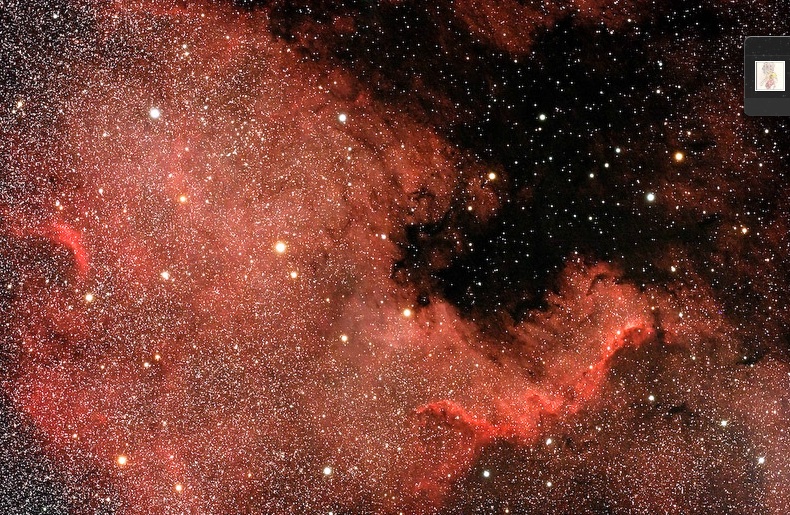
The gas and dust of the North America Nebula glow pink and red in this skywatcher photo.
The North America Nebula lies in the constellation Cygnus, and it takes its name from a supposed resemblence to the continent. It is an emission nebula — essentially, a cloud of high-temperature gas emitting light of various colors.
The image was taken by Jean-Luc Dauvergne in August 2007 from the observatory at the Pic du Midi mountain in the French Pyrenees. The skyscape in the image glowing most brightly is the most active part of the nebula, a region astronomers call the Cygnus Wall. Here, hydrogen gas burns where new stars are forming.
The North America Nebula, also known as NGC 7000, is roughly 1,800 light-years away and perhaps 100 light-years in diameter. A light-year is the distance light travels in one year, or about 6 trillion miles (10 trillion kilometers).
Editor's note: If you have an amazing skywatching photo you'd like to share for a possible story or image gallery, please contact managing editor Tariq Malik at tmalik@space.com.
Follow SPACE.com for the latest in space science and exploration news on Twitter @Spacedotcom and on Facebook.
Get the Space.com Newsletter
Breaking space news, the latest updates on rocket launches, skywatching events and more!
Join our Space Forums to keep talking space on the latest missions, night sky and more! And if you have a news tip, correction or comment, let us know at: community@space.com.
Nina Sen is a freelance writer and producer who covered night sky photography and astronomy for Space.com. She began writing and producing content for Space.com in 2011 with a focus on story and image production, as well as amazing space photos captured by NASA telescopes and other missions. Her work also includes coverage of amazing images by astrophotographers that showcase the night sky's beauty.









